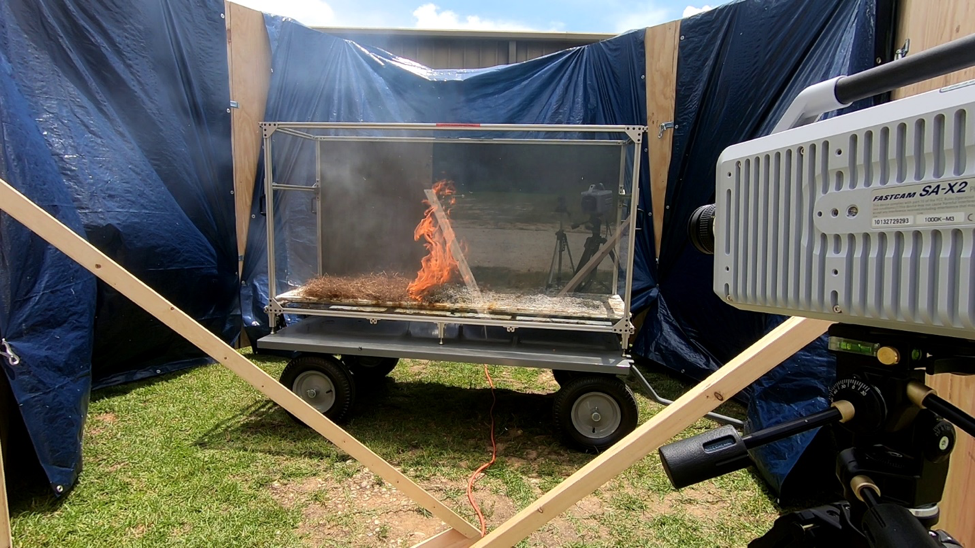 This project seeks to develop a three-dimensional, physics based, time-accurate model for simulating the spread of forest fires in the Southeast United States. The accurate prediction of wildland fire propagation is a challenging area of research combining the fields of fluid dynamics, combustion, and chemistry. Most current models employ lower order empirical methods relying on experimental and historical data rather than accurate combustion physics to generate their results. These models have primarily been focused on the western United States with little focus on the Southeast. Low order models are convenient for their ability to give relatively good predictions with low computational cost, but they lack the accuracy that can be obtained from a true physics-based simulation. The current research will develop a model that takes inputs regarding fuel type and environmental conditions to simulate how a forest fire would propagate under the given conditions. The developed model will be validated using a series of fire strip burning experiments. Such a tool will give a better understanding of how to safely conduct controlled burns to enhance ecosystem health and assist in predicting the impact of a wildland fire in the Southeast United States.
This project seeks to develop a three-dimensional, physics based, time-accurate model for simulating the spread of forest fires in the Southeast United States. The accurate prediction of wildland fire propagation is a challenging area of research combining the fields of fluid dynamics, combustion, and chemistry. Most current models employ lower order empirical methods relying on experimental and historical data rather than accurate combustion physics to generate their results. These models have primarily been focused on the western United States with little focus on the Southeast. Low order models are convenient for their ability to give relatively good predictions with low computational cost, but they lack the accuracy that can be obtained from a true physics-based simulation. The current research will develop a model that takes inputs regarding fuel type and environmental conditions to simulate how a forest fire would propagate under the given conditions. The developed model will be validated using a series of fire strip burning experiments. Such a tool will give a better understanding of how to safely conduct controlled burns to enhance ecosystem health and assist in predicting the impact of a wildland fire in the Southeast United States.

